Center for Skill and Entrepreneurship Development - E-Vehicle Mechanical
Industry Inside Institute
A Center for Skill and Entrepreneurship in Electric Vehicles (EV) from a mechanical perspective serves as a vital bridge between academia and industry, focusing on the integration of advanced mechanical engineering principles into the evolving EV landscape. By establishing such a CSED within an institute, students gain hands-on experience with industry-standard tools, materials, and processes, directly aligning their education with the needs of the EV sector. This collaboration fosters the development of industry-ready engineers equipped with the latest skills in electric powertrains, thermal management, lightweight materials, and vehicle dynamics. The CoE enables students to engage in real-world projects, working alongside industry experts to innovate and refine EV technologies, ultimately enhancing their employability and contributing to the growth of the EV industry.

Bodywork Design
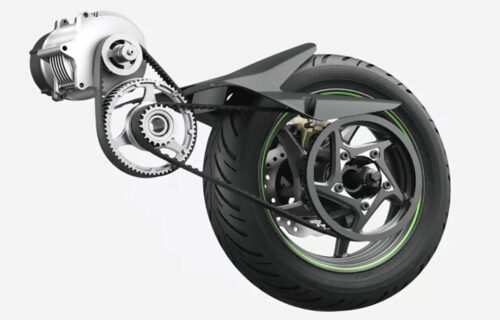
Electric Powertrain
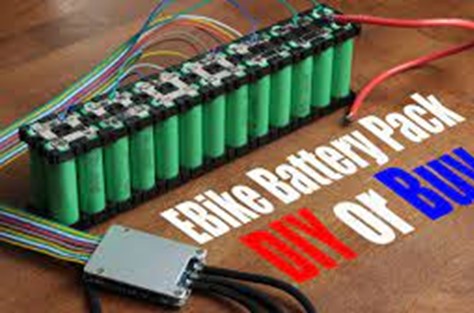
Battery Housing and Integration
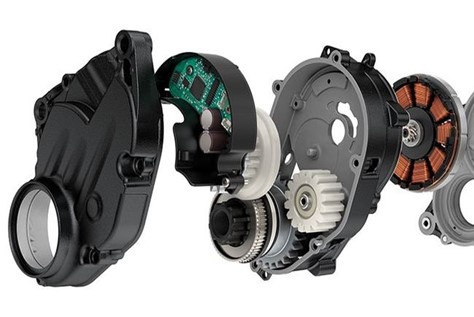
Regenerative Braking
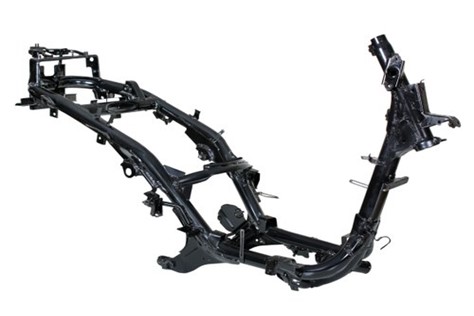
Chassis/Frame
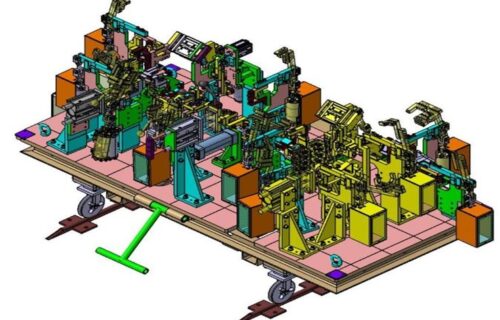
Fixturing & Part Assembly
OBJECTIVES
The objective of the E-vehicle Design Mechanical Fundamentals training program is to provide participants with a comprehensive understanding of the fundamental concepts and principles related to the mechanical design of electric vehicles. The program aims to equip participants with the knowledge and skills necessary to design and develop various mechanical components of electric vehicles, including chassis, suspension, powertrain, and other critical systems.
OUTCOMES
- Solid understanding of the fundamental principles of mechanical engineering, with a specific focus on electric vehicle design.
- Ability to apply engineering principles to analyze and design mechanical components for electric vehicles.
- Knowledge of various materials and manufacturing processes used in the production of electric vehicle components, and their impact on design decisions.
- Familiarity with industry standards and regulations related to electric vehicle design and safety.
- Ability to collaborate effectively with cross-functional teams, including electrical engineers, software engineers, and other stakeholders involved in electric vehicle design and development.
SCOPE
Upon completion of the E-vehicle Design Mechanical Fundamentals training program, participants can pursue careers in the electric vehicle industry as mechanical design engineers, product development engineers, or research and development engineers. They may work with automotive manufacturers, electric vehicle startups, consulting firms, or research organizations, and be responsible for designing, analyzing, and optimizing mechanical components and systems for electric vehicles. Job scope may include creating 3D models, conducting simulations, performing calculations, developing prototypes, testing and validating designs, and collaborating with interdisciplinary teams to ensure efficient and reliable electric vehicle designs.
PROJECTS
- Designing and optimizing a chassis or suspension system for an electric vehicle, considering factors such as weight, structural integrity, and performance.
- Developing a powertrain system for an electric vehicle, including motor, gearbox, and associated mechanical components, considering efficiency, power-to-weight ratio, and packaging constraints.
- Conducting a simulation-based analysis of the thermal performance of an electric vehicle battery pack and designing an appropriate cooling system.
- Collaborating with a cross-functional team to develop a complete electric vehicle concept, including mechanical, electrical, and software components, and presenting the design to industry experts.
Note: Above are study project only
OBJECTIVES
The objective of this training program is to equip learners with the knowledge and skills required to design and develop products using CATIA software.
OUTCOMES
- To give shape to the idea, concept design and controlling the geometrical shape of the designed component.
- To create 3D model of the design concept, understanding the part designing requirements that fulfil the design needs of various modules like CAE, CAM, CMM, Tool Designing, Drafting, 3D Printing.
- To understand , create, and control the complex shape geometries. To design & develop a new product from the existing one.
- To design assemblies, mechanism for validation.
- To understand the industrial drafting standards and generating industrial
SCOPE
- Design and Development Engineers,
- Product Development Engineer,
- Entrepreneurship
PROJECTS
- New product development
- Converting existing 2D drawings to 3D Model
- Delivery of Manufacturing drawing
Content
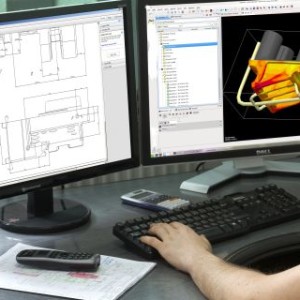
OBJECTIVES
The objective of this training program is to provide participants with the skills and knowledge required for styling Class A surface design, which is the highest level of surface quality in the automotive and industrial design industry. Participants will learn the principles, techniques, and tools used in creating high-quality, aesthetically pleasing, and functional Class A surfaces for various product design applications.
OUTCOMES
- Understand the concepts and principles of Class A surface design.
- Apply advanced surfacing techniques using industry-standard software such CATIA.
- Create Class A surfaces with precision, continuity, and curvature control GO, G1, G2 & G3.
- Understand the importance of design intent, reflections, and highlights in Class A surfaces.
- Identify and troubleshoot common issues in Class A surface modeling.
- Collaborate effectively with other design professionals in a multidisciplinary team environment.
- Develop a professional portfolio of Class A surface design work.
- Conceptual design of automotive Class A surface & CAD model of EV.
- Get idea of nurbs & slab modeling, sharp surface models.
- Surface evaluation – reflection lines
SCOPE
Graduates of this training program will have the skills and knowledge to work as Class A surface designers in various industries such as automotive design, industrial design, aerospace design, and consumer product design. They may find employment in design studios, product development firms, manufacturing companies, or as freelance designers. Job roles may include Class A surface modeler, automotive designer, industrial designer, product designer, or CAD modeler. Entrepreneurship.
PROJECTS
Throughout the training program, participants will work on a series of projects that will allow them to apply their learning and develop their skills in Class A surface design. Projects may include:
- Designing a Class A surface for an automotive exterior component, such as a car hood or fender.
- Creating a Class A surface for a consumer product, such as a smartphone or a laptop.
- Designing a Class A surface for an aerospace component, such as an aircraft fuselage or wing.
- Collaborating with other participants to create a Class A surface model for a concept vehicle or industrial design project.
- Developing a portfolio of Class A surface design work that showcases the participant’s skills and creativity.
OBJECTIVES
The objective of the training program for the design of Electric Vehicle (EV) Powertrain is to equip participants with the knowledge and skills required to design efficient and sustainable powertrains for electric vehicles. The program aims to provide a comprehensive understanding of EV powertrain components, their integration, and system optimization techniques.
OUTCOMES
- Understand the fundamental principles and concepts of electric vehicle powertrain design.
- Design and optimize key components of an electric vehicle powertrain, including the electric motor, power electronics, battery management system, and thermal management system.
- Analyze and select appropriate powertrain configurations, including different types of electric motors, drivetrain layouts, and power electronics topologies, based on vehicle requirements and performance criteria.
- Demonstrate proficiency in using design tools and software for electric vehicle powertrain design and simulation.
- Develop an understanding of safety considerations, regulatory requirements, and industry standards related to electric vehicle powertrain design.
- Apply the principles of sustainability and environmental impact assessment in the design of electric vehicle powertrains.
SCOPE
- Electric Vehicle Powertrain Design Engineers
- Electric Propulsion System Engineers
- Electric Motor Design Engineers
- Battery System Engineers
- Power Electronics Engineers
- Electric Vehicle Integration Engineers
- Research and Development Engineers in the field of electric mobility
PROJECTS
- Design and optimization of an electric motor for a specific electric vehicle application, considering performance, efficiency, and thermal management.
- Development of a battery management system (BMS) for an electric vehicle, including battery pack sizing, state-of-charge (SOC) estimation, and safety features.
- Design and simulation of a power electronics system for an electric vehicle, including power converters, inverters, and control strategies.
- Integration and optimization of different powertrain components, such as the electric motor, power electronics, and thermal management system, for a specific electric vehicle platform.
- Evaluation and comparison of different powertrain configurations, such as different types of electric motors, battery chemistries, and drivetrain layouts, for different vehicle applications.
OBJECTIVES
The objective of this training program is to provide participants with comprehensive knowledge and skills in designing and manufacturing of EV fixturing and part assembly. The program will cover various aspects, including design principles, manufacturing techniques, project management, and hands-on experience with relevant tools and software. Jig-Fixture Design for Welding, Sub assembly, Final vehicle assembly
OUTCOMES
- Introduction to BIW-fixture, BIW-fixture basics, Pre-design processes
- Demonstrate proficiency in designing and manufacturing of EV fixturing and part assembly.
- Apply industry-standard design principles and manufacturing techniques to develop efficient and effective EV fixturing and part assembly solutions.
- Utilize relevant tools and software for designing and manufacturing of EV fixturing and part assembly.
- Demonstrate project management skills for overseeing EV fixturing and part assembly projects.
SCOPE
- Jig and Fixture Designer, Entrepreneur
- Design Engineer: Designing EV fixturing and part assembly solutions using Computer-Aided Design (CAD) software.
- Manufacturing Engineer: Managing the manufacturing process of EV fixturing and part assembly, including selecting appropriate materials, tools, and techniques.
- Project Manager: Overseeing EV fixturing and part assembly projects, coordinating with cross-functional teams, and ensuring timely completion
Objectives:
- Knowledge Acquisition:
- Equip participants with a deep understanding of the principles and technologies behind regenerative braking systems (RBS).
- Introduce the various types of regenerative braking systems used in different vehicles, including electric and hybrid vehicles.
- Skill Development:
- Develop hands-on skills in designing, implementing, and troubleshooting regenerative braking systems.
- Foster the ability to integrate regenerative braking systems into larger vehicle systems.
- Industry Relevance:
- Ensure participants understand current industry standards and emerging trends related to regenerative braking.
- Prepare participants to apply regenerative braking technologies in real-world automotive and industrial applications.
- Innovation Encouragement:
- Encourage innovative thinking for improving existing regenerative braking systems.
- Promote research and development activities among participants to advance the technology further.
Outcomes:
- Technical Proficiency:
- Participants will demonstrate a comprehensive understanding of regenerative braking systems and their components.
- Successful completion of practical exercises and simulations involving regenerative braking systems.
- Project Completion:
- Participants will complete a project involving the design or enhancement of a regenerative braking system, showcasing their learning and innovation.
- Industry-Ready Skills:
- Graduates of the program will possess the skills necessary to contribute to projects in automotive, aerospace, and other industries where regenerative braking is applicable.
- Certification:
- Participants will receive a certification indicating their proficiency in regenerative braking systems, making them more competitive in the job market.
Scope:
- Target Audience:
- Engineers, technicians, and students specializing in automotive, electrical, and mechanical engineering.
- Professionals seeking to upskill in emerging automotive technologies.
- Program Duration:
- The program will run over 6-8 weeks, with a mix of theoretical and practical sessions.
- Content Coverage:
- Introduction to regenerative braking systems and their significance.
- Detailed study of the mechanics and electronics involved.
- Hands-on sessions with regenerative braking hardware and software.
- Case studies of real-world applications.
- Project work involving the design, simulation, and testing of a regenerative braking system.
- Resources Required:
- Access to simulation software for regenerative braking systems.
- Hardware components such as motors, generators, and energy storage systems for practical sessions.
- Industry experts and trainers with experience in regenerative braking systems.
Project:
- Project Title:
- “Design and Optimization of a Regenerative Braking System for Electric Vehicles”
- Project Description:
- Participants will work in teams to design a regenerative braking system tailored for an electric vehicle. The project will involve selecting appropriate components, designing the system architecture, and optimizing the energy recovery process. The final deliverable will include a working model or simulation of the system, along with a detailed report on the design choices and performance metrics.
- Key Deliverables:
- Detailed project report.
- Design schematics and simulations.
- Prototype or software model demonstrating the regenerative braking system.
- Presentation of the project findings and outcomes.
This framework will help in structuring the skill development program effectively and ensure that participants gain valuable skills and knowledge in regenerative braking systems.